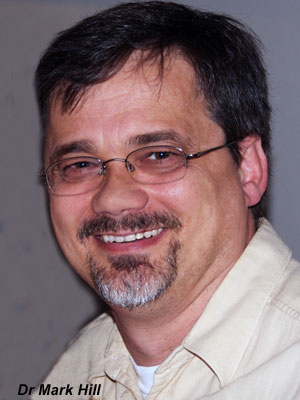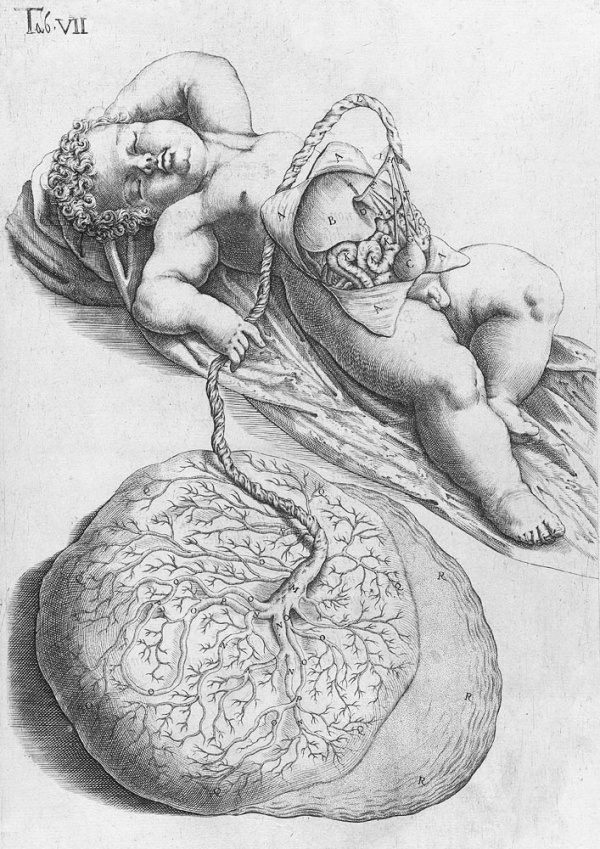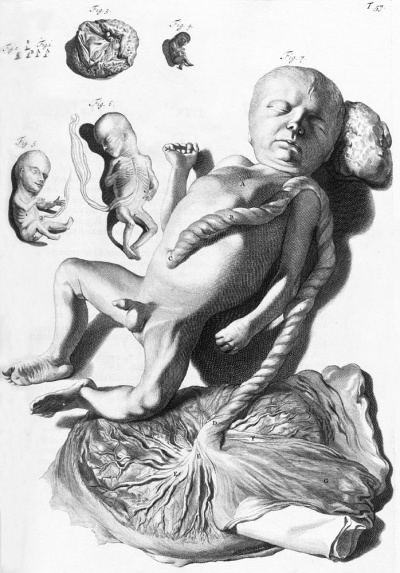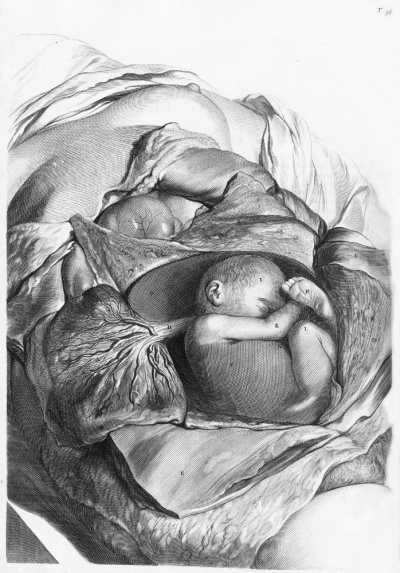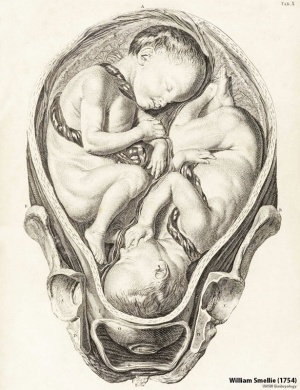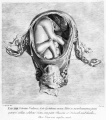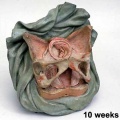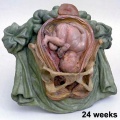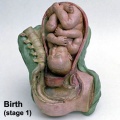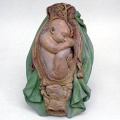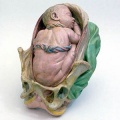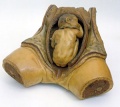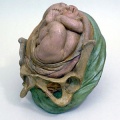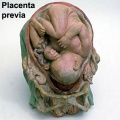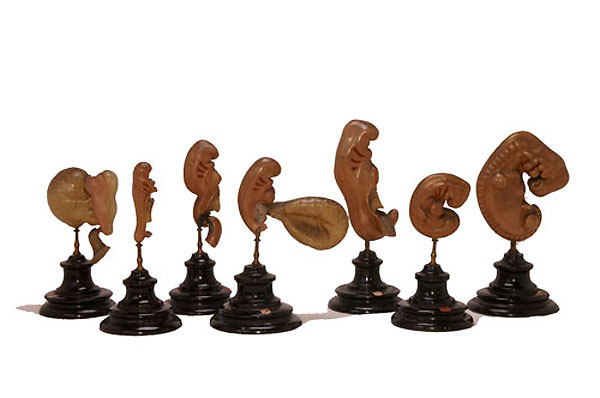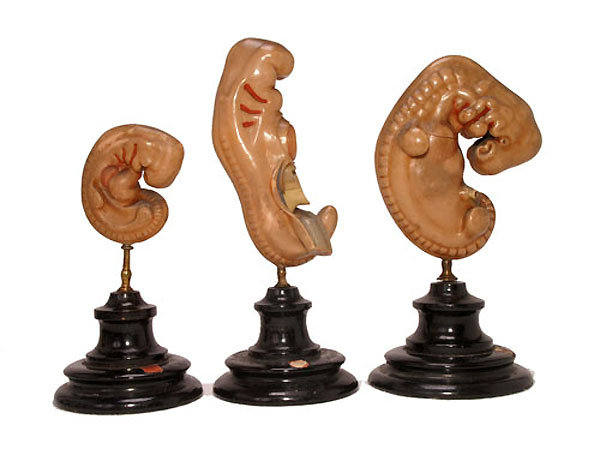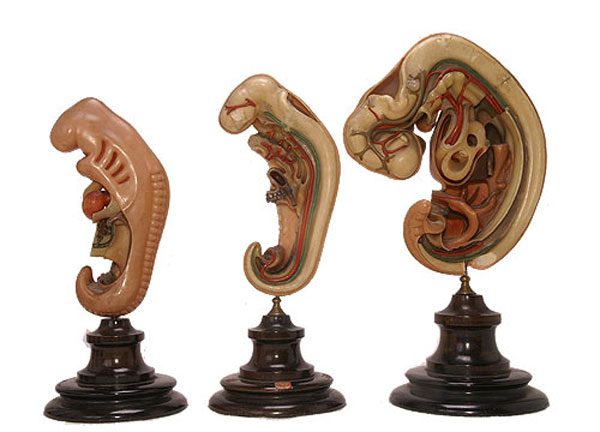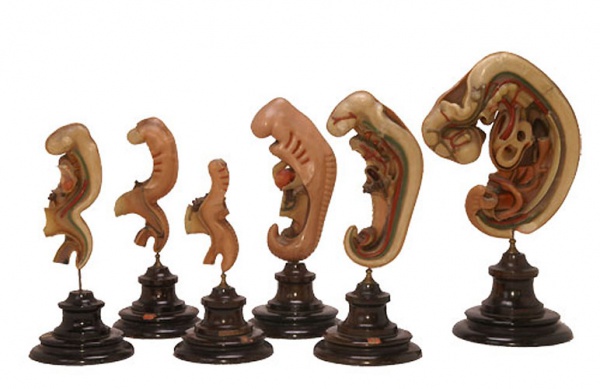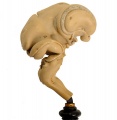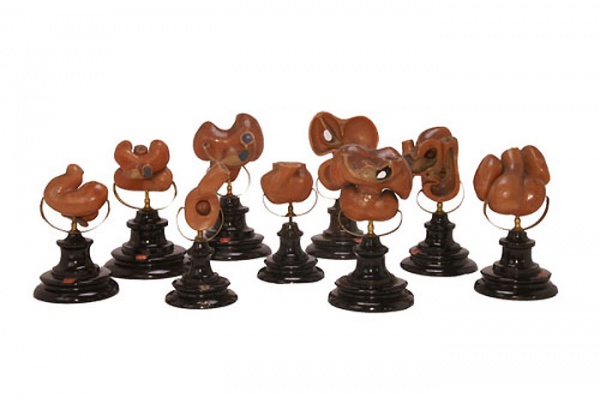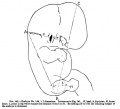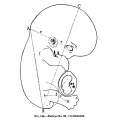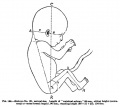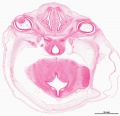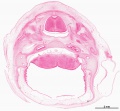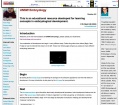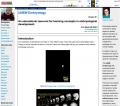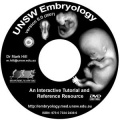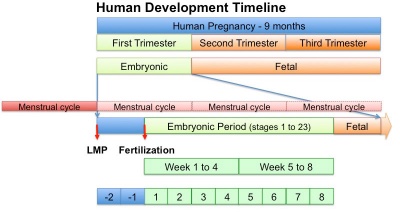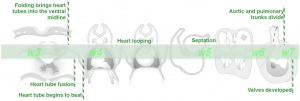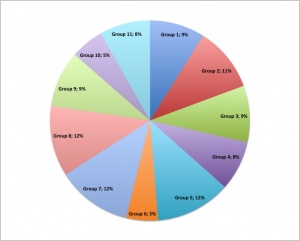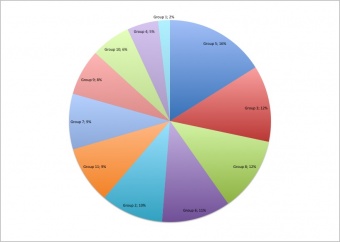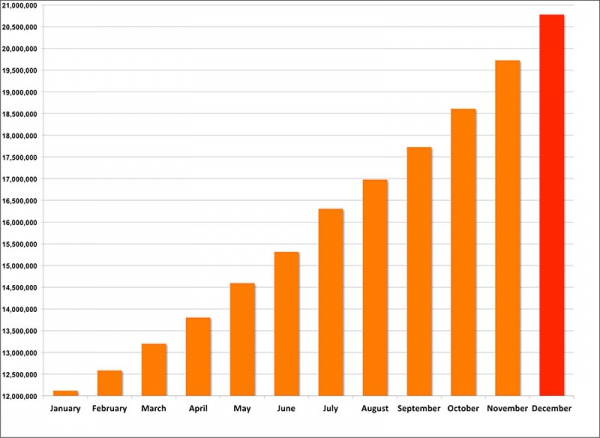Museum of Natural History Berlin - 2013 Seminar
- 11:00 25th November 2013 Translate page - German
The Evolution of Embryology Education
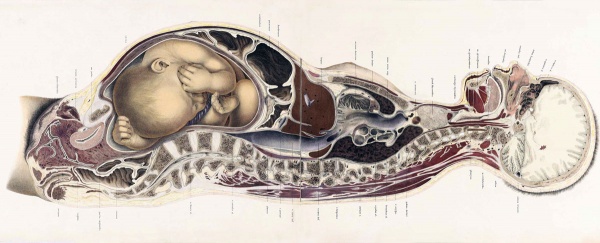
Introduction
| Embryology is a cornerstone of both Medical Education for medical students and Developmental Biology for science students. In this presentation I will explore how the teaching of Embryology has evolved in our Medical School with the entry into the digital age and the expansion of new teaching and research techniques.
|
Seminar Summary
|
Early History
Anatomies
(16th to 18th century)
Placenta and Fetus (Spiegel and Casseri, De formato foetu liber singularis, 1626)
| Example Anatomies | ||||
|---|---|---|---|---|
|
17th and 18th Century Anatomies Spiegel and Casseri - De formato foetu liber singularis (1626) Published posthumously by Spigelius' son-in-law, the physician Liberalis L. Crema of Padua. Govard Bidloo - Ontleding des menschelyken lichaams, Amsterdam: By de weduwe van Joannes van Someren, de erfgenaamen van Joannes van Dyk, Hendrik en de weduwe van Dirk Boom, 1690.
William Smellie - A sett of anatomical tables, with explanations, and an abridgment, of the practice of midwifery (1754) He also helped develop the delivery forceps which by the late eighteenth century were a well-known standard obstetrical instrument. Set of Anatomical Tables Table 10 showing a twin pregnancy, from A sett of anatomical tables, with explanations, and an abridgment, of the practice of midwifery (1754)
Wilhelm Braune - Topographisch-anatomischer Atlas : nach Durchschnitten an gefrornen Cadavern, Leipzig: Verlag von Veit & Comp., 1867-1872. An Atlas of Topographical Anatomy (1877) |
Galletti Models
(late 18th century)
| Galletti Models |
|---|
| Obstetric models life-size wax models and scaled (1:3) terracotta models, examples of techniques for teaching medicine and obstetrics to midwives and surgery students at the end of the 18th century.
|
Beginning Last Century - 1900's
Ziegler Models
(19th to early 20th century)
Ziegler Freiburg workshop (c 1912). Ziegler Models | Embryology Models
| Ziegler Models (1860's - ) |
|---|
|
Embryos Brain Development Heart Development |
Carnegie and Blechschmidt Models
Embryo Collections and Staging
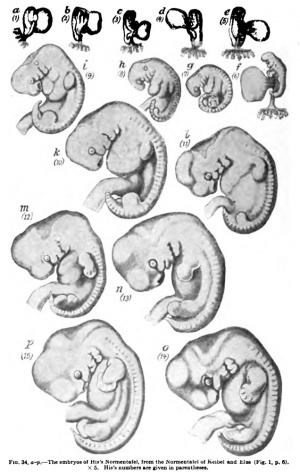
|
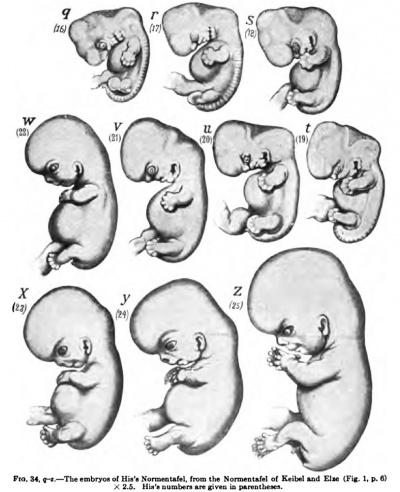
|
| His's Normentafel (human embryo staging) | |

|

|
| Carnegie Collection (USA) | Kyoto Collection (Japan) |
- Carnegie Stages: 1 | 2 | 3 | 4 | 5 | 6 | 7 | 8 | 9 | 10 | 11 | 12 | 13 | 14 | 15 | 16 | 17 | 18 | 19 | 20 | 21 | 22 | 23 | About Stages | Timeline
| Embryo Staging |
|---|
Animal Models
- Experimental embryology - involving manipulation of animal models.
- Imaging development - electron microscopy, fluorescence microscopy, confocal microscopy, ultrasound, tomography.
- Research fields - molecular biology, in vitro fertilisation, stem cells.
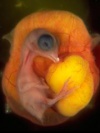
|
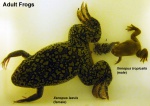
|

|
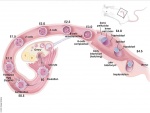
|
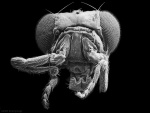
|

|
| Chicken | Frog | Rat | Mouse | Fly | Zebrafish |
| Animal Development: axolotl | bat | cat | chicken | cow | dog | dolphin | echidna | fly | frog | goat | grasshopper | guinea pig | hamster | horse | kangaroo | koala | lizard | medaka | mouse | opossum | pig | platypus | rabbit | rat | salamander | sea squirt | sea urchin | sheep | worm | zebrafish | life cycles | development timetable | development models | K12 |
Recent Embryology Education
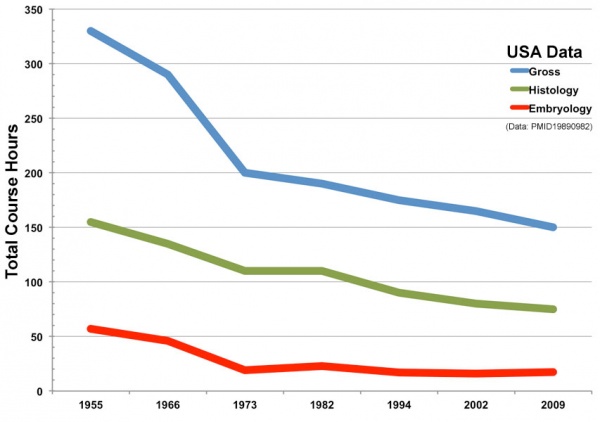
Trends in anatomy disciplines contact teaching hours based on data from USA survey.
|
Less contact time, but a growing list of new clinically relevant topics.
|
Embryo Serial Sections
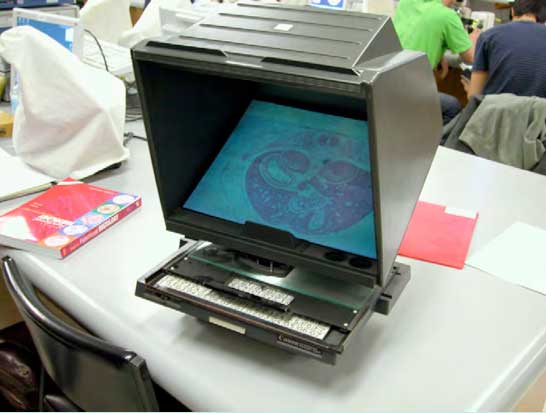
|
Microfiche Reader used in Medicine and Science classes from 1975 to 1995.
View embryo section 49 images (7x7 matrix) in 3 sets:
|
| Microfiche Unlabeled Images | ||||||||||||||||||||||||||||||||||||||||||||||||||||||||||||||||||||||||||||||||||||||||||||||||||
|---|---|---|---|---|---|---|---|---|---|---|---|---|---|---|---|---|---|---|---|---|---|---|---|---|---|---|---|---|---|---|---|---|---|---|---|---|---|---|---|---|---|---|---|---|---|---|---|---|---|---|---|---|---|---|---|---|---|---|---|---|---|---|---|---|---|---|---|---|---|---|---|---|---|---|---|---|---|---|---|---|---|---|---|---|---|---|---|---|---|---|---|---|---|---|---|---|---|---|
| ||||||||||||||||||||||||||||||||||||||||||||||||||||||||||||||||||||||||||||||||||||||||||||||||||
| ||||||||||||||||||||||||||||||||||||||||||||||||||||||||||||||||||||||||||||||||||||||||||||||||||
|
1997 Online
| Technology Timeline | |
|---|---|

The changing technology environment we have experienced in the last 50 years, and more recently in the last 20 "internet years". | |
|
|
Online Development
Movies
|
| ||||
| Glossary | A | B | C | D | E | F | G | H | I | J | K | L | M | N | O | P | Q | R | S | T | U | V | W | X | Y | Z | ||||
| Abnormal Development |
|
2004 New Medicine Program
- Previously lectures and practicals covering a semester.
- Embryology became "integrated" into new cross-discipline courses.
Lecture Example
BGD - Development of the Embryo/Fetus 1
- Replace powerpoint slides
- Can be formatted for printing
- Accessible at all times (including Mobile Access)
- Can be opened during associated practical class
- Links to:
- Textbooks
- Related online pages, including practical, audio etc.
- Movies
- Glossary
Practical Example
BGD - Practical Fertilization to Implantation
- Organised into a timeline
- Each page worked through with the demonstrator
- Independent time to ask questions
- Students can cut n paste for their own notes
- Online Quizzes | Category:Quiz
Student Project Examples
- Part of the Medicine undergraduate program allows for individual students to work on research or educational projects related to medicine.
- The projects are academically supervised and are described as an "Independent Learning Project" (ILP).
|
|

|
| Cardiac Embryology Tutorial | Carnegie Stage Embryo 3D Animations |
Science Student Projects
|
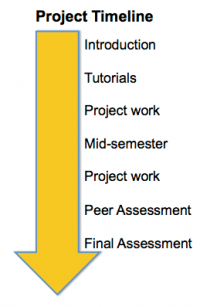
|
Online
Notes
(Shown in the lefthand menu)
- System Development
- Embryonic Development
- Categories
- Assisted Reproductive Technology
- Stem Cells
- Quizzes - Example Medicine - Foundation Quiz
Statistics
eBooks
| Embryology iBooks 2013 software update now allows iBooks to be downloaded and read on tablets, laptops and desktop computers. |
Final Remarks
- I remind you that I do not intend to cover everything shown on this seminar page. Some content can be returned to and studied in your own time.
- Embryology education will continue to evolve online as new technologies and research techniques are developed.
- Finally, and most importantly, I thank all my Contributors who have helped make this a site so rich in embryology content.
External Link: Museum für Naturkunde - DE | EN
External Links Notice - The dynamic nature of the internet may mean that some of these listed links may no longer function. If the link no longer works search the web with the link text or name. Links to any external commercial sites are provided for information purposes only and should never be considered an endorsement. UNSW Embryology is provided as an educational resource with no clinical information or commercial affiliation.
Cite this page: Hill, M.A. (2024, April 27) Embryology Museum of Natural History Berlin - 2013 Seminar. Retrieved from https://embryology.med.unsw.edu.au/embryology/index.php/Museum_of_Natural_History_Berlin_-_2013_Seminar
- © Dr Mark Hill 2024, UNSW Embryology ISBN: 978 0 7334 2609 4 - UNSW CRICOS Provider Code No. 00098G
